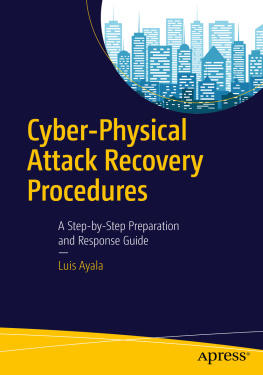1. #
2. A
ABC fire extinguisher : Chemically-based fire extinguishing device used to put out ordinary combustible, flammable liquid and electrical fires.
Abnormal Situation Management (ASM) : ASM was developed with the goal of improving safety and performance in process plants. Over the past 20 years, the ASM Consortium has developed knowledge, tools, and products designed to prevent and manage abnormal situations in the process industry. This knowledge is directly applicable to cyber-physical attack response.
abort gate : A high-speed damper designed to divert sparks, flames, smoke, combustion gases, and burning material out of a pneumatic system and evacuate the air through a discharge hood. An abort gate contains a spring-assisted blade that is usually held in place by an electromagnet that typically will react within 1/2 second. Used to protect dust collection systems and prevent dust explosions. If an attacker hacks a dust collection systems abort gate at an industrial facility to prevent it from doing its job, there is a high probability of a dust explosion.
absolute encoder : Maintains equipment position information when power is lost from a manufacturing environment. Once power is restored, the position information is immediately available.
acceptable level of risk : Typically refers to the point at which the level of risk is more acceptable than the cost to mitigate the risk (in dollars or effect on building mission function).
access : (1) The technical ability to do something with a computer resource. This usually refers to ability to read, create, modify, or delete a file; execute a program; or use an external connection, admission, or entrance. (2) The ability or opportunity to obtain sensitive or classified information. SOURCE: CNSSI-4009
access control : The limiting of access to the resources of an IT (information technology) system only to authorized users, programs, processes, or other IT systems. SOURCE: FIPS 201; CNSSI-4009
access control list (ACL) : A list of permissions that specifies which users or system processes are granted access to objects. Each entry specifies a subject and an operation (Joe: write, read, Sam: read only). SOURCE: CNSSI-4009
Access Matrix : An Access Matrix uses rows to represent subjects and columns to represent objects with privileges listed in each cell.
access point : A device that logically connects wireless client devices operating in infrastructure to one another and provides access to a distribution system, if connected, which is typically an organizations enterprise wired network. SOURCE: SP 800-48; SP 800-121
access profile : The association of a user with a list of protected objects that the user may access. SOURCE: CNSSI-4009
access type : The privilege to perform action on an object. Read, write, execute, append, modify, delete, and create are examples of access types. SOURCE: CNSSI-4009
account harvesting attack : The process of collecting all the user account names on a computer network. Often used to refer to computer spammers, individuals who try to sell or seduce others through e-mail advertising or solicitation. Account harvesting involves using computer programs to search areas on the Internet in order to gather lists of e-mail addresses from a number of sources, including chat rooms, domain names, instant message users, message boards, newsgroups, online directories for web pages, web pages, and other online destinations.
account management : Involves the process of requesting, establishing, issuing, and closing user accounts; tracking users and their respective access authorizations; and managing these functions. SOURCE: SP 800-12
accountability : The property that enables activities on a system to be traced to individuals, who may then be held responsible for their actions. The security goal that generates the requirement for actions of an entity to be traced uniquely to that entity. This supports non-repudiation, deterrence, fault isolation, intrusion detection and prevention, and after-action recovery and legal action. SOURCE: SP 800-27
ACK : In some digital communications protocols, notification that a signal has been received successfully. The ACK signal is sent by the receiving station after receipt of data. When the source gets an ACK signal, it transmits the next block of data.
ACK piggybacking attack : Is an active form of wiretapping when a hacker sends an ACK inside another packet to the same destination.
active cyber-attack : An intentional cyber-attack perpetrated that attempts to alter a SCADA (supervisory control and data acquisition) system, its resources, its data, or its operations. SOURCE: CNSSI-4009
active attack : An attack on the authentication protocol where the attacker transmits data to the claimant, credential service provider, verifier, or relying party. Examples of active attacks include man-in-the-middle, impersonation, and session hijacking. SOURCE: SP 800-63
active content : Electronic documents that can carry out or trigger actions automatically on a computer platform without the intervention of a user. Software in various forms that is able to automatically carry out or trigger actions on a computer platform without the intervention of a user. SOURCE: SP 800-28, CNSSI-4009
activation : When all or a portion of the cyber-physical attack recovery plan has been put into motion.
active security testing : Security testing that involves direct interaction with a target, such as sending packets to a target. SOURCE: SP 800-115
activities : An assessment object that includes specific protection-related pursuits or actions supporting an information system that involve people (e.g., conducting system backup operations, monitoring network traffic). SOURCE: SP 800-53A
activity monitor : Used to prevent a cyber-attack by monitoring a system and blocking malicious activity. A system monitor for an operating system, which also incorporates task manager functionality. Some of the functions include killing computer processes, viewing CPU load, checking the amount of random access memory in use, and other functions.








